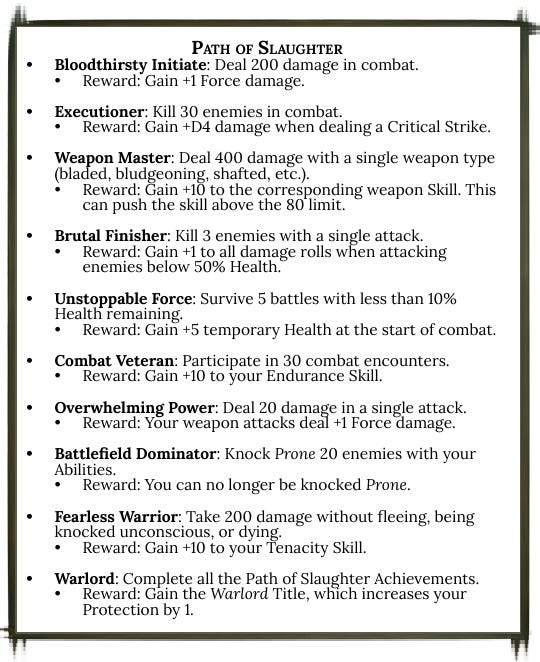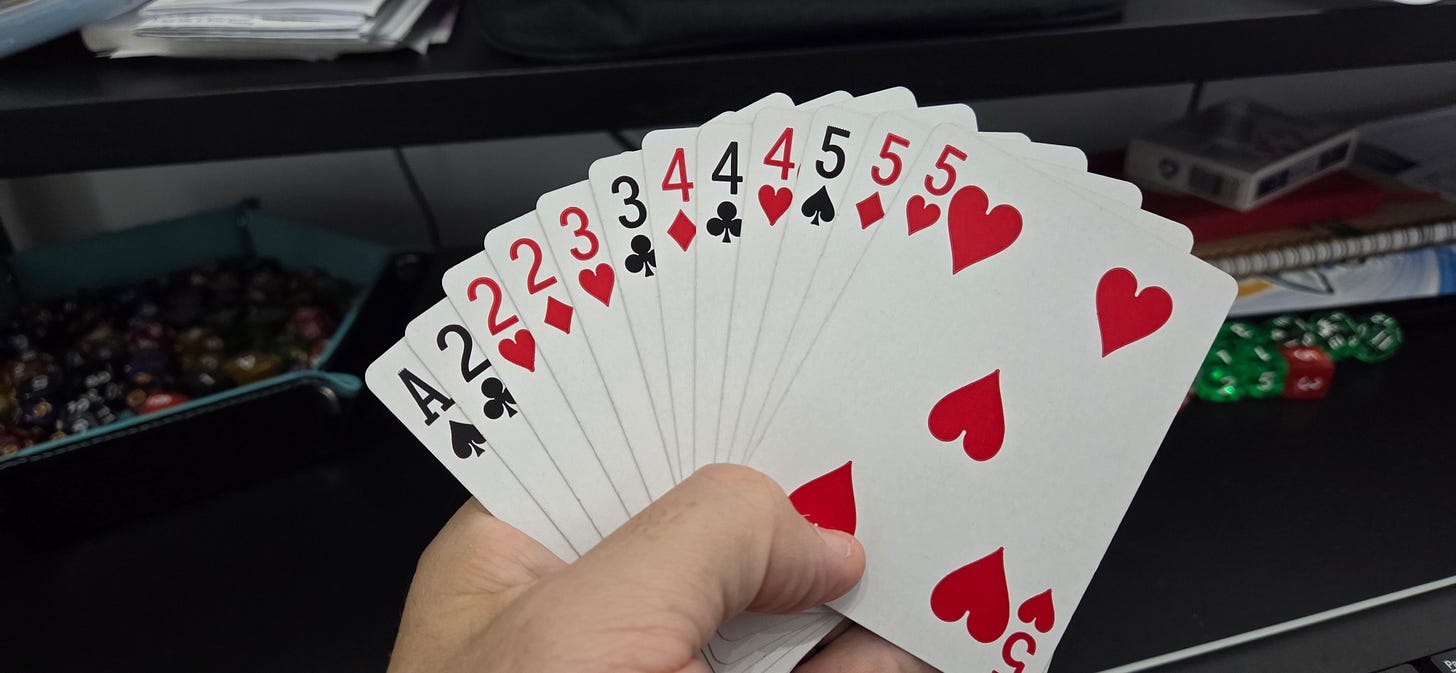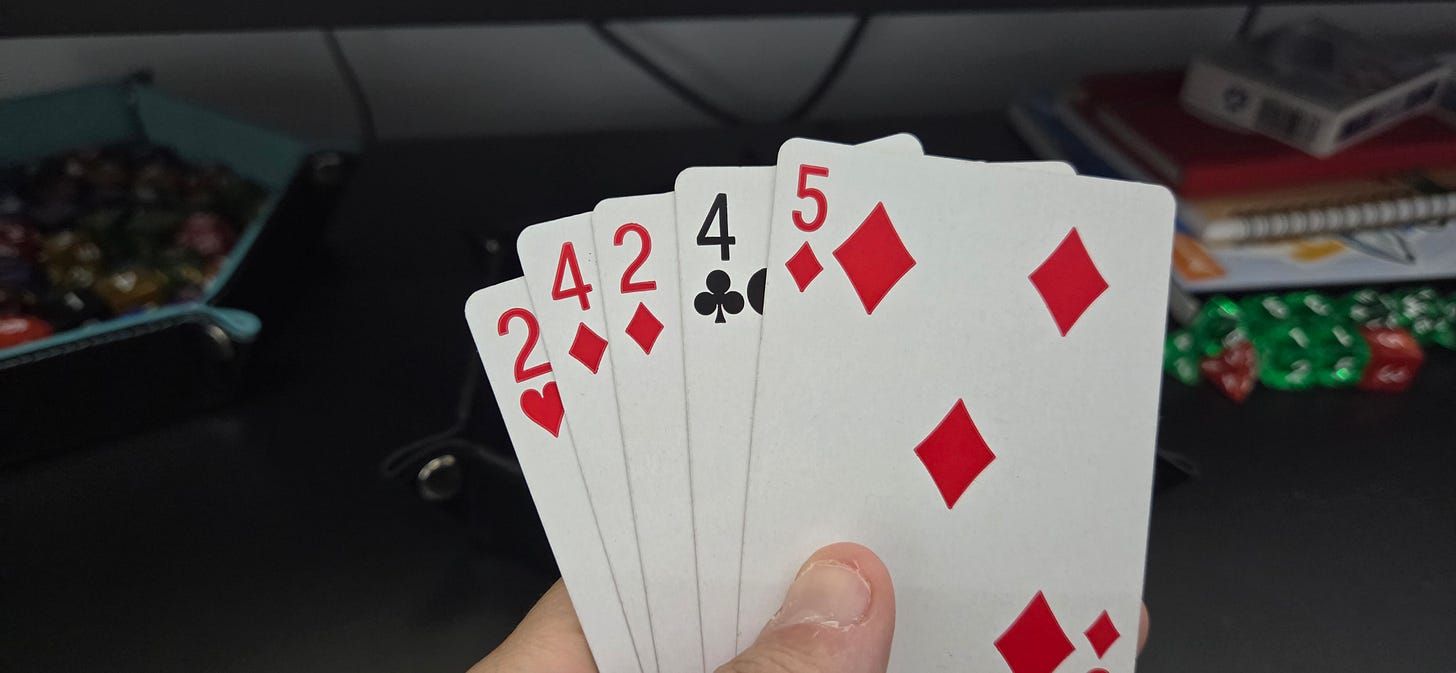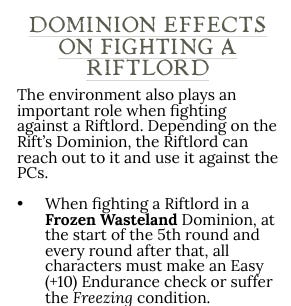Overview: Riftbreakers 2nd Edition by Blackoath Entertainment, an MMO-based TTRPG
Let's take a look at this addictive TTRPG filled with mechanics inspired by online multiplayer videogames.
I’ve started a Let’s Play! It starts at Session 0: Character creation.
If you ever looked for a solo TTRPG to scratch an MMO itch, the quests, crafting, looting, and classless progression system in Riftbreakers: Second Edition will do the job perfectly.
Designed, written, and published by Alex T. from Blackoath Entertainment, Riftbreakers 2e is inspired by the structure and feel of MMORPGs like World of Warcraft and Final Fantasy XIV. It offers a solid system for storytelling, lots of combat, and, most of all, deep and satisfying character customization.
I’ve said before that one of my favorite RPG classes is the bard, and that is in large part because of Ragnarok Online, so I immediately fell for Riftbreaker’s main concept.
The game can be played solo or co-op, with or without a GM. It contains oracles and tables for random events, action and theme, landmark generators, NPC creation and behavior, different scene interpretations, and more. You can definitely play just using the main book, but you can also plug your favorite GME tool, like Mythic.
Skill checks use a D100 to roll equal to or under, and it’s the main dice system in the game. You still use other dice to roll on tables and oracles.
This will not be an extensive overview. Riftbreakers 2e is a 300+ page beast packed with mechanics and rules, so I’ll be doing my best to give a general impression of the game and why I’m loving it so much.
First steps
We play as a Stranger, a person dropped from another reality into Kaethor with no memories. It’s up to you how to interpret this event. Quite popular nowadays, especially in anime, is the Isekai—a normal person on Earth dies and reincarnates in a fantasy world.
Kaethor is plagued by Rifts that spawn around the land, unleashing monsters, chaos, and death. Exploring and closing these anomalies is a major task for a Stranger.
Rifts serve as randomly generated dungeons in the game. You can, of course, roam the overworld map and generate your own locations for dungeon crawling with the tables included in the book or with any other system.
There is a lot of story and lore in the book about the world of Kaethor and its different regions, peoples, factions, mysteries, and creatures, but I’ll leave that for you to explore.
A no-class act
Character creation and progression is one of the strongest points in Riftbreakers. Instead of classes, we unlock Hearts, a group of powers around a theme or playstyle, like Arcane, Blade, Might, Shadow, etc. Unlocking a Heart gives access to its abilities, but to learn one you need a Heart Essence. Both Hearts and Essences are found as loot during gameplay.
We can mix and match abilities from all Hearts found, and that’s how we build a character. Instead of a class, we choose a loadout of abilities that can be as specific or broad as we want.
Maybe you want to use a two-handed sword, cast fireballs, use shadows to teleport around the battlefield, and summon spectral allies. Well, go ahead!
Stats include Aether (which functions like mana, or action points that are restored each round) Health, Luck, Parry, and Protection.
There are 30 skills to invest in, from Agility to Weaponsmithing, so we can customize your character to our taste. I think skills could have been done a little differently, but I’ll get there.
There are also achievements, like in videogames. We choose a Path and track the progress of one achievement at a time, receiving a nice bonus at completion. How cool is that?
The mechanics are crunchy and extremely well thought out. It makes grinding in the game very addicting and fun.
Locked and loadout
To make our loadout, we choose 12 abilities (with 3 repeats at most). During battle, we roll a D12 five times, and we have our hand for the round. Abilities cost Aether (remember, replenished every round), so we have to think about what to use.
Let’s see an example. Say my abilities are Weapon Strike, Arcane Blast, Desperate Strike, Force Ball, and Shield. A total of 5 abilities, but a loadout needs 12. We can have a maximum of 3 repeats, so here’s how I’m doing it:
Weapon Strike (default ability. Damage varies by weapon)
Arcane Blast
Arcane Blast
Arcane Blast
Desperate Strike
Desperate Strike
Shield
Shield
Shield
Force Blast
Force Blast
Force Blast
During my turn in battle, I roll the D12 five times, getting: 2, 2, 5, 8, 10. When we get a repeat, we roll to the next available number. In this case, 3, another Arcane Blast. My hand for that turn will be: Arcane Blast, Arcane Blast, Desperate Strike, Shield, and Shield.
If I use any of those 5, it goes back to the loadout. I can also discard any of them at the end of my turn, or simply choose to keep all five to use at some point.
At the start of every turn, we must have 5 abilities in hand. If we used or discarded any, we roll again to fill our hand. And that’s it.
There is an alternative to the dice: this can also be done with a common deck of cards! It works like Slay the Spire, or any other deckbuilding game. We draw cards, use and discard to a discard pile, then keep drawing each turn until there’s none left. Then we shuffle the discards and start over.
Let’s assign each of our previous 5 unique abilities to poker cards, from A to 5.
A: Weapon Strike
2: Arcane Blast
3: Desperate Strike
4: Shield
5: Force Blast
Here’s the loadout:
Let’s draw a hand:
Amazingly, that’s the same draw as the previous example, and it wasn’t intentional.
Clever and fun, right? If you’re still not getting it, don’t worry. I will include examples in my upcoming playthrough.
At some point, Alex will release a deck of cards with all abilities on DrivethruRPG.
There’s more to battle like positioning, range, status effects, parry and evade, armor, damage types, etc, but those are better shown in action.
Looters prosper
There are no character levels in Riftbreakers 2e. The main character progression is done through:
Leveling skills. You will randomly find books that increase a chosen skill by two points. When you use a skill using a D100, every time you roll a double (succeeding or not) you mark that skill for improvement at the end of your session, when you will either increase it by 1 or roll a D4.
Acquiring new Hearts and Heart Essences. We get them through fighting, questing, and looting in general.
Last but not least, looting.
Gear, Hearts, money, recipes, materials for crafting, and more are all gained through looting around Kaethor, making it the primary form of advancing through the game.
Magic items are powerful and will complement your chosen abilities and skills. If you’re lucky with the enchant rolls, of course. They’re all randomly generated, except for Epic items, which are unique.
Questing me softly
In Riftbreakers 2e, the city of Kar Helos functions as a hub to players, where we do a lot of downtime activities (and main activities as well). There is no other major city in the world, only small communities from hex encounters. Nothing stops us from creating our own in the sandbox, of course.
There is also an encounter table in Kar Helos that we’re supposed to roll every in-game hour, but I find it a little overkill. Part of the magic of an MMO is the possibility of ignoring everything around us and focusing solely on what we want—that might very well be encounters in Kar Helos, but maybe just a current quest, a side story generated by RPing, a small grinding session for crafting materials, killing enemies with abandon on the world map, and so on.
The opposite approach is also possible, if that’s more your thing. We can choose to engage with absolutely everything that comes our way and generate NPCs, storylines, quests, hooks, conversations, interactions, and whatever else comes to mind, blending it all together and seeing how it plays out.
A good portion of our time will be spent doing Board quests. We can randomly generate 1D4+2 quests for the board every 3 in-game days. Quests give us a structured and intentional way to go looting, great rewards, and reputation points with the Adventurers Guild.
Board quest types are Delivery (a fetch quest), Escort (protect a caravan for a period on the world map), Monster Hunt (find and kill an elite enemy), Patrol, (walking around and reporting open Rifts), and Rift Closure (venture into a Rift, defeat the Riftlord, and shut the Rift down).
That’s a lot of muscle to crush. Good thing that Riftbreakers comes stocked with a bestiary of 90 unique monsters, ranging from cutpurses to sky krakens. There are several types of enemies, with different traits, tables with attacks for each one, rules for scaling in case you have a Companion or are playing co-op, and more.
Most fights are also optional. Encountering an enemy usually doesn’t mean engaging in combat. Think of monsters in MMOs: not all of them are aggressive and attack you on sight. We choose whether we want to deal with them.
A few enemies, however, have the Stalker trait, which simulates the ‘aggro’ of a videogame monster, and encountering one will always result in combat. You can still flee, though.
Dying to one of them is not the end. We lose all our items and money, D4 max health, and an ability of our choosing, then respawn back in Kar Helos, where we receive a basic kit from the Adventures Guild. Our corpse remains where it fell, and we can retrieve our stuff at any time.
No rest for the Rifted
Again, closing Rifts is an important part of a Stranger’s life. The goal is to venture into its different areas and kill the Riftlord inside.
When entering a Rift, we will roll on its Dominion, or type—Frozen Wasteland, Sky Islets, Timeworn Ruins, etc. This will affect what areas and encounters we find inside.
Then we roll on the table for that specific type, play out the event, dealing with the generated area, and check if the Riftlord is present. If it is, we generate one based on the Dominion and an enemy table. If not, we keep exploring.
Areas can have dangerous encounters with enemies, environmental hazards and traps, or a landmark. Landmarks are generated by the GM or by the tables included in the book.
These elements form the extensive variation found within the anomalies. No two Rifts will ever be the same.
Riftlords are elite enemies (extra damage, double HP, and 1 action per turn per character/Companion). They also have two extra moves in their action table and a passive ability, both determined by the Rift Dominion.
They’re the most challenging enemies in Riftbreakers, and a true test of a Stranger’s loadout and preparation.
A well-crafted subtitle (it’s about crafting)
Just like in most MMOs, crafting is an important progression pillar in Riftbreakers 2e. Even though it’s fully optional, and you can sell all resources you find, the mechanic is tightly designed and satisfying.
Crafting comes in 3 main categories:
Alchemy. Alchemical ingredients allow us to craft potions, elixirs, and other defensive and offensive concoctions.
Gear. We can craft powerful weapons, armor, or jewels like rings and amulets. They can have magical enchants, unique properties, passive buffs, synergy with different Hearts, and even be mastercrafts.
Cooking. Some types of monsters can be harvested for cooking ingredients. That includes humans. Kaethor is a harsh land, isn’t it? Meals give temporary buffs like defense, HP, and even skill boosts.
It’s a powerful and rewarding mechanic, but not easy to access. To even start crafting, we need the required skills, the proper tools, and money to rent a crafting station.
Then we need the formula for the item we wish to make, the materials and ingredients required to craft it, and more money to spend on the attempt.
And how do we find all those ingredients and blueprints? That’s right, buying from the shop looting.
So get out there, questing or just wandering, and don’t forget to harvest those human organs.
A minor criticism
Please keep in mind that the following are very subjective comments. They are offset by the core concept of the game, which I will get into after my points.
First, I think that access to healing potions is unnecessarily difficult. There are two ways to find one:
Get a really lucky drop.
Craft it. To craft it, we need:
Decent skill level in Alchemy.
Get a really lucky drop to get the formula.
Decent skill level in Gathering to harvest ingredients.
Gather ingredients and get lucky to harvest the necessary ones.
Money to spend on a crafting station and to attempt crafting the potion.
All that is done with a lot of fighting and exploring. I think that’s a lot of hoops to jump through for a healing item. But again, the game is carefully balanced, so I should probably get used to it instead of trying to make it cater to me.
Another thing I didn’t like so much is related to roleplaying and skills outside of fighting.
I have a hard time roleplaying interactions that don’t rely on combat because my character is only skilled at survival, crafting, and physical feats. This is my fault, of course, but I can’t help but feel that even though we have 30 skills to pick, a few of them are redundant or specific to only a handful of situations. They could be combined into one thing and open room for new and diverse ones. Groups like:
Survival, nature, and animal handling.
Agility and Athleticism.
Endurance and Tenacity.
Command and Manipulation.
Insight, Reason, and Perception.
Lockpicking and Sleight of Hand.
The game is all but complete at this point. Only tiny details are being ironed out, so the balance hangs on those skills. Alex is probably future-proofing a lot of ideas with them, but I feel like they could be condensed, and then diversified.
These two points are offset by the core concept in Riftbreakers 2e: a system without classes, meant for the player to customize a character based on skills, so it should be obvious that not every character will excel at everything. Jack-of-all-trades are masters of no Rifts.
I should probably wrap my head around this and maybe use more oracle answers instead of relying only on skills for interactions.
I didn’t see other players talking about it on the Blackoath Discord, so please understand that this is mostly a me problem. And it’s not even a problem, really, more of a preference.
Difficulty is also a staple of Blackoath’s games, so that should be expected.
A note about Alex T
I struggle to create house rules (personal rules to change the game for yourself—think of modding in a videogame) for a TTRPG before wrapping my head around the whole system. I need to understand the game completely before tweaking it.
If I start changing one thing, I’ll want to change two, then 10, then why even bother why a specific game ruleset? It’s very OCD, but it’s how I have fun with it.
So, I tend to reach out to creators and ask them a lot of questions. If you’ve read my stuff, you’ll notice that I’ve only covered small developers so far (Blackoath is the biggest one!) They have all been wonderfully receptive and patient in explaining their rules and systems to someone obsessed with every minor detail that probably won’t come up in a playthrough.
I just want to give a heartfelt thank you to Alex for answering every single question I and other fans have about his games every time, without fail, with patience, kindness, and care.
Despite having launched several games and working on new ones at all times, he answers questions about all of them. He’s incredibly active on the Blackoath Discord, talking to players, interacting with the community, helping newcomers, and taking every bit of feedback into consideration.
His dedication doesn’t go unnoticed.
Conclusion
To conclude, I think Riftbreakers 2e is the closest we can get to a satisfying MMO experience in a TTRPG package, with solo built in from the foundation. The game has a lot of room for expansions and development, so I really hope it’s a smashing success.
The mechanics are crunchy and fun to interact with. The game encourages exploration and especially fighting to acquire random generated loot. The classless system is very ingenious, and rewards you the more you interact with the progression around it.
The sandbox world of Kaethor feels alive, and it’s easy to imagine other players running by your side as you walk in Kar Helos to pick up a quest from the board.
Riftbreakers 2e is in a final beta phase, about 99% done, just receiving its final polish. Expected release is at the end of 2025.
The book was edited by Brian Hazard, and the fantastic cover was made by Francesco Crobu. Other amazing contributing illustrators and artists are Miguel R. Mata, Penny Melgarejo, Glynn Seal, and David Northcutt.
Check out Blackoath Entertainment's work and support the creators.
Blackoath Entertainment: Site | Patreon | Itch.io | DrivethruRPG | Instagram








Very interested in your playthrough of this! I have a lot of great memories of playing MMO's with friends and my partner, but between time and cost commitments, I can't justify getting back into any of them. A system that emulates it on tabletop is super interesting to me, so I can't wait to read how it plays!
Riftbreakers 2e has been on my short list of games to play for a little while now - it is a bit of a commitment so I cannot wait to read your playthrough. I super agree that Alex T is a top tier person. Blackoath is the first and only Patreon I have joined. It is way cool to have a first look at some of his stuff (Across a Thousand Dead Vaults!). I would consider his approach a direct inspiration to me as a fledgling developer.
Also, excellent overview and critique of the game. The loadout concept is excellent is sounds fun. It sounds like a successful encapsulation of MMOs. I like the critiques - I might have vendors sell health potions for a high price.
Anyhow, awesome read. Looking forward to trying it myself.